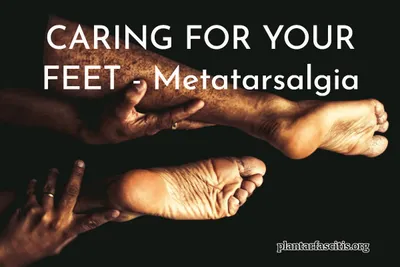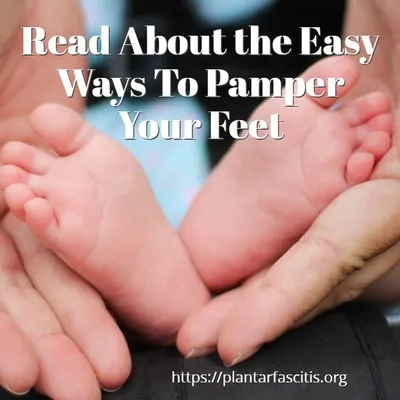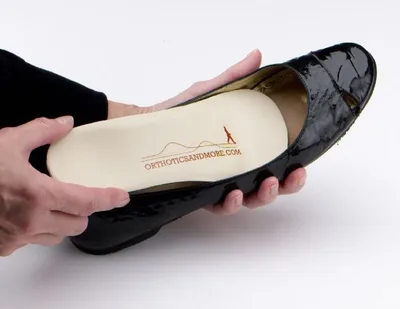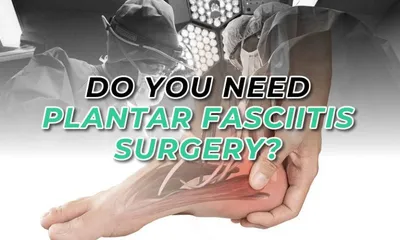Foot Care – Metatarsal Pain
Forefoot Pain or Pain in the Ball of the Foot
Description: The above terms all refer to pain in the balls of the feet (the area between the toes and the arch).
The most important structures in the balls of the feet are the five metatarsal heads (the ends of the metatarsal bones that connect to the toes) and the protective fatty pad that cushions the ball of the foot.
Each time we step forward, we push off with our toes and the ball of the foot, forcing ourselves forward. We force 100% of our body weight on these structures.
If they are not aligned perfectly or have insufficient fatty padding, we experience pain in the ball of the foot.
- This 4-pack of gel metatarsal pads fits women’s shoe sizes 8-12.5 and men’s shoe sizes 7-11 to offer more comfort, support and reliability across the entire forefoot. Unlike a shoe insole, our meta pads are designed to be worn over your foot for better fit and protection to the bottom of your feet.
- Alleviate pain due to calluses, corns, sesamoiditis or Morton neuromas caused by long periods of standing, running, dancing, or other high impact activities. The cushioning gel comforts, soothes and balances your forefeet for all day relief, whether wearing high heels, running shoes or loafers.
- Relieves pressure on the ball of your foot by providing weight distribution and shock absorption while walking, running and standing. Protects the fragile sesamoid and metatarsals from further damage.
- ZenToes Metatarsal Ball of Foot cushions save you money because they are washable and reusable. Simply hand wash with gentle soap and warm water and lay flat to dry. With 2 pairs in each package, you’ll always have a set ready to wear!
- Fits Most, But Not All: Every foot is unique, so while our product works for the majority of customers, it may not be a perfect fit for everyone. If it doesn’t work for you, we’re happy to offer a refund or replacement in a different size or style.
Last update on 2025-11-19 / Affiliate links / Images from Amazon Product Advertising API
Causes of Pain in the Balls of the Feet: The normal foot consists of bones and joints held together perfectly by soft tissue structures known as ligaments, muscles, and tendons.
When this alignment is abnormal in the ball of the foot, we feel pain and frequently develop painful calluses in the underlying skin.
Calluses are symptoms of abnormality in the bones and joints of the foot’s ball.
The most common causes of pain in the balls of the feet are:
• Dropped metatarsal (also known as plantarflexed metatarsal head or displaced metatarsal head):
Each foot has five metatarsals that connect to one of our five toes. The metatarsals sit in a precise relationship, one to the other, forming the metatarsal arch (also called the transverse arch).
As we step down on the ball of our foot, the metatarsal arch begins to flatten in response to our body weight.
This allows the ball of the foot to function as a shock absorber. If one or more of the metatarsal heads sits lower than the other heads, it will bear more of our body’s weight than it should.
After a time, the dropped metatarsal head becomes “beaten up” from all the extra or abnormal weight it carries, inflamed and painful.
Also, because the metatarsal head has “dropped,” it is sitting closer to the skin on the bottom of the foot, pushing its protective fat pad away so that you may feel the protruding metatarsal head with your finger.
Due to the lack of a normal fatty pad under the metatarsal head, the head applies abnormal pressure on the underlying skin. The skin may respond to this increased pressure by building up a painful callus.
Causes of a dropped metatarsal include:
A flexible foot. In this type of foot, the ligaments, tendons, and muscles are too lax to allow them to hold the bones and joints together in their most optimum alignment.
The most common cause of a flexible foot is a biomechanical defect known as pronation.
High-heeled shoes. When the heel is raised, our weight is thrown onto the foot ball. This increased weight stretches the soft tissues that maintain the metatarsal arch, allowing one or more metatarsal heads to drop.
Injuries to the ball of the foot. When fractured metatarsals or dislocated joints are not properly treated, they may heal in an abnormal position, allowing the metatarsal head to drop.
• Thinning or destruction (atrophy) of the protective fat pad in the ball of the foot:
The fat pad in the ball of the foot functions as a shock absorber for the underlying bones, joints, and soft tissue structures. When the pad is not of optimum thickness, the force and weight of each step we take is passed on to the underlying structures rather than absorbed and whisked away by the fat pad.
This eventually produces inflammation and pain in the soft tissues, bones, and joints in the foot ball.
- [POWERSTEP PINNACLE PLUS MET]: Full length insoles, built-in metatarsal pad for ball of foot pain, neutral arch support, maximum cushioning, high activity for moderate support.
- [FOOT PAIN PREVENTION AND RELIEF]: PowerStep Pinnacle Plus insoles are ideal for pain associated with Plantar Fasciitis, Achilles Tendonitis, shin splints and other foot, ankle, knee, hip & back pain. As the #1 Podiatrist recommended brand, our mission and purpose at PowerStep is to create a more comfortable and happier life for our customers. ~ The PowerStep Pain Free Life
- [NEUTRAL ARCH SUPPORT | METATARSAL SUPPORT | MAXIMUM CUSHIONING]: PowerStep Pinnacle Plus Met insoles are full-length insoles with a built-in metatarsal pad. Created specifically for those with metatarsalgia, Morton’s Neuroma and general ball of foot pain, these neutral arch supporting insoles help alleviate pain in the ball of foot. The proven PowerStep arch shape cradles the arch and heel, adding stability and motion control to limit excess stress on feet, ankles, joints, and tendons.
- [DESIGNED FOR EVERYDAY USE]: First time PowerStep or orthotic insole users may need a transition period of wearing insoles only a few hours a day until feet are accustomed to all day support and stability. PowerStep Pinnacle Plus Met insoles can be worn in a variety of shoe types such as; athletic, walking/running, work and some casual and dress shoes. Inserts are ordered by shoe size, no trimming required.
- [PROUDLY MADE IN THE USA]: Your 100% satisfaction is our #1 concern, and all our products are backed by our 30-day money back guarantee.
Last update on 2025-11-19 / Affiliate links / Images from Amazon Product Advertising API
The most common causes of a thin or absent fat pad include:
As we age, the fatty protective pad begins to absorb. The rate of this absorption will depend on your genes.
A dropped metatarsal head will destroy the fatty pad between it and the skin.
Some diseases, including rheumatoid arthritis, connective tissue disorders, and some endocrine diseases, cause fatty pads in the feet to become thinner.
Excessive and prolonged pressure on the ball of the foot will cause the fat pad to be thinned or destroyed. Some causes are high-heeled shoes, barefoot shoes, or shoes with very thin soles.
• Feet with high arches:
This foot type is usually rigid and does not allow the high arch to contact the ground when we step down.
Therefore, as we step forward, all our weight is thrown onto the balls of the feet, rather than some of the weight being carried by the arch.
This will force the metatarsal heads in the balls of the feet to bear excessive weight. The results of this repetitive and excessive weight on the metatarsal heads is pain, inflammation, and swelling in the balls of the feet.
Treatment for Pain in the Balls of the Feet: To reduce the pain in the balls of the feet, we must do the following:
• Rebalance the metatarsal heads so that the dropped metatarsal heads are raised to their normal and most optimum positions. This will ensure that each metatarsal head will bear its “fair share” of our body weight. When this occurs, the pain in the balls of the feet will gradually subside.
Just padding the ball of the foot will not provide this relief. To rebalance the foot, we must use a custom-made orthotic.
Each person’s problem is truly unique.
To provide lasting relief, the treatment must be directed toward elevating your specific metatarsal head by the exact amount it has dropped.
When this is accomplished, the pain subsides, and the metatarsal arch is reformed, allowing it to function as the body’s shock absorber.
This type of relief can only be obtained using custom-made orthotics made from molds of your feet.
• Replace the fatty pad protection on the balls of the feet. In constructing custom-made orthotics, we protect the balls of the feet with materials that will absorb friction and excessive pressure rather than passing them to the balls of the feet.
The materials used to act like more fat and padding were added to the feet without excessive bulk.
• Support high arches to relieve excess pressure on the balls of the feet. Custom-made orthotics are designed to comfortably allow this type of arch to function as if it were of an average height.
Doing this allows the arch to bear its normal weight, thus reducing the weight the football must bear.
This will reduce the pressure on the metatarsal heads and fatty pads, thus reducing pain and fatigue.
• Adjust and accommodate any abnormal walking patterns, such as pronation, in-toeing, out-toeing, etc., that affect how weight is distributed across the balls of your feet when you walk.
Custom-made orthotics will allow the feet to function normally when they strike the ground rather than in a twisted position, thus removing the excessive weight and pressure from the balls of the feet.
- ✨CUTTING-EDGE MATERIAL: Made of stretched Lycra fabric and expert-grade gel with double-stitched seam that prevents gel leaking, the toe ice pack is soft, comfortable, and skin-friendly to wear while you’re sitting, standing or walking.
- ✨PAIN-RELIEVING FOR FOOT AND HAND: Our foot ice pack provides 360°full coverage to the toe and forefoot through compression support that offers the maximum boost to your blood circulation. Worn over your feet for better fit and protection. Also you can choose to wear it on your hands for pain relieving.
- ✨HOT & COLD THERAPY: Place the ice sock in a refrigerator for 2 hours and apply it to the affected area for around 20-minute cold therapy; Put the toe ice pack in the microwave for 10 seconds for heat therapy. You can always keep it in a fridge for ready use.
- ✨EASY TO WEAR: You can just pull it on your feet like a sock, easy to wear without the disturbance of Velcro or strap, alleviating pain due to swelling, soreness, sprains, plantar fasciitis, corns.
- ✨EXCELLENT CUSTOMER SERVICE: All Helthrelife products are made of high-quality material. If you are unsatisfied with the toe ice pack, please feel free to contact us for 1-year FREE replacement or refund.
Last update on 2025-11-19 / Affiliate links / Images from Amazon Product Advertising API
Metatarsal Pain Exercises
If you’re experiencing arch pain, here are some exercises that could help alleviate it:
- Towel Curl: This exercise can help strengthen the muscles of your feet, including your arches.
- Sit on a chair with your feet flat on the ground before you.
- Place a small towel on the ground in front of your feet.
- Try to scrunch up the towel using only your toes and then flatten it back out again.
- Heel Raises: This simple exercise works both your calf muscles and those in your foot.
- Stand up straight with your feet shoulder-width apart.
- Slowly raise yourself onto the balls of your feet before slowly lowering yourself back down again.
- Stair Stretch: This exercise can relieve sore arches by using a stair or a raised platform.
- Stand on a step with just the balls of both feet, letting your heels hang off the edge.
- Gradually lower your heels until you feel a stretch in the arches of your feet, and hold for 10-15 seconds.
- Frozen Can Roll: Cold therapy and massage-like pressure can benefit painful arches.
- Freeze a tin can or water bottle filled with water
- Take off any footwear and roll the sole of each foot over it
- Plantar Fascia Stretch: This stretches one of the key ligaments in maintaining the structure and function of our arches.
- Sit down and cross one foot over your other knee.
- Grab onto your toes and pull them back towards you until you feel a stretch along the bottom of your foot.
Remember to start each new exercise slowly to avoid further irritation or injury, increasing intensity as you become more comfortable with each movement.
If pain continues, please consult a healthcare professional who may provide additional treatment options or physiotherapy guidance.
Metatarsal Pain Healing Time
The healing time for metatarsal pain can vary greatly depending on the cause and severity of the injury.
- For minor injuries or strains, it may take a few weeks to a couple of months for the pain to fully subside with rest, ice, compression, and elevation (RICE protocol), and appropriate footwear.
- The bone typically takes 6 to 8 weeks to heal if the pain is due to a fracture. However, it may take several months for the pain to disappear completely and for the foot to return to normal function.
- In severe cases, such as a metatarsal stress fracture or if surgery is required, the recovery time can be several months.
Everyone’s body heals at a different rate, and this timeline may vary.
It’s always important to follow your healthcare provider’s instructions for treatment and recovery.










